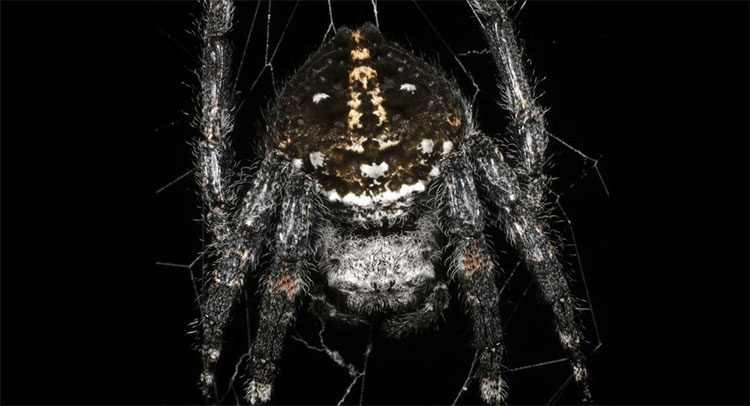Revealing the secret of spiders creating the world's most durable silk thread
Scientists have deciphered the genome of a spider called Madagascar that produces the world's largest and most massive spider webs, and has discovered a unique protein that makes spider silk more robust than fold. 10 times Kevlar fiber.
Important molecular detection and its use are published in Communications Biology.
"We hope that our discovery will be used to create new materials that are inferior to the fibers of Darwin's bark spider (Caerostris darwini), whose thread is a kind of animal. most durable biology on Earth Our findings once again show that evolutionary biological studies are very important for the development of biotechnology " - scientist Jessica Garb from the University of Massachusetts Lowell (USA) said.

Madagascar Spider.
Spider web attracted the attention of many engineers, biochemists and biologists. Engineers are interested in ways to create networks, biochemists want to know the chemical composition of silk, and biologists want to elucidate the adaptive mechanisms that spiders use to create networks. Scientists believe that copying the spider's skills will help us create ultra-light armor and super-durable structure.
The bark spiders of the Caerostris darwini species live in forests on the island of Madagascar attracting particularly great attention. These spiders create the world's largest and largest diameter network, covering a few square meters and silk fibers up to 25 meters long.
Garb noted that their silk is twice as strong as other spider's webs, but previously scientists did not know the cause of that phenomenon. Recently, physicists have discovered that, in fact, webbing strands of Darwin spiders can last nearly twice as long as someone tries to break them, but, the molecular mechanism of elasticity This incredible has been a mystery to scientists.
The problem is: the silk of all spiders, including Caerostris darwini, is the same protein structure for all spiders. This makes scientists think about why silk of Madagascar spiders has extraordinary strength.

Caerostris darwini spider web.
To answer this question, scientist Garb and her colleagues extracted silk-producing cells in spider organs, tracking the activity of different genes in those cells and decoding them. their structure. In addition to the two known proteins in spider silk, scientists have discovered a distinct peptide type with their structure.
After analyzing the structure of the molecule named MaSp4 , the scientists discovered that it contained a large amount of proline, an amino acid, probably related to the elasticity of the spider web. The binding of this protein is integrated into the filaments that may have spring elasticity, which helps the spider web to expand and at the same time maintain high strength.
In addition to MaSp4, the unique nature of the Caerostris darwini spider web may be related to the fact that spider spinning bodies are of an unusual length and are slightly different from other spiders. As scientists assume, these characteristics make the three types of spider silk proteins more tightly bonded and lined up in a smooth row, which increases durability and does not reduce elasticity.
Scientists hope that all these discoveries will help create spider silk-like synthetic versions to replace Kevlar fibers in armor, as well as to replace the classic silk threads used in medicine, textile industry and many other fields.
- Discover the secret of spider silk stamina
- Found a way to transform genes to create spider silk like Spider Man
- This is why fragile spider silk is 5 times stronger than steel
- Spider-Man's weapons are not logical about science
- US test 'dragon silk' is more durable than steel
- Spotted spiders from ... legs
- Mechanism to catch spooky prey of spiders
- The secret of spider silk
- Spiders can release silk to neutralize prey
- Why so little bigger spiders male spiders?
- Video: How to clean up the silk inside a spider?
- Super durable armor from spider silk
- Wolf spiders have the ability to release silk from ... legs
- Genetically modified bacteria can produce super-durable spider silk for making space suits
 Why do potatoes have eyes?
Why do potatoes have eyes? 'Tragedy' the world's largest carnivorous life: Death becomes ... public toilet
'Tragedy' the world's largest carnivorous life: Death becomes ... public toilet Tomatoes were once considered 'poisonous' for 200 years
Tomatoes were once considered 'poisonous' for 200 years Detecting microscopic parasites on human face
Detecting microscopic parasites on human face